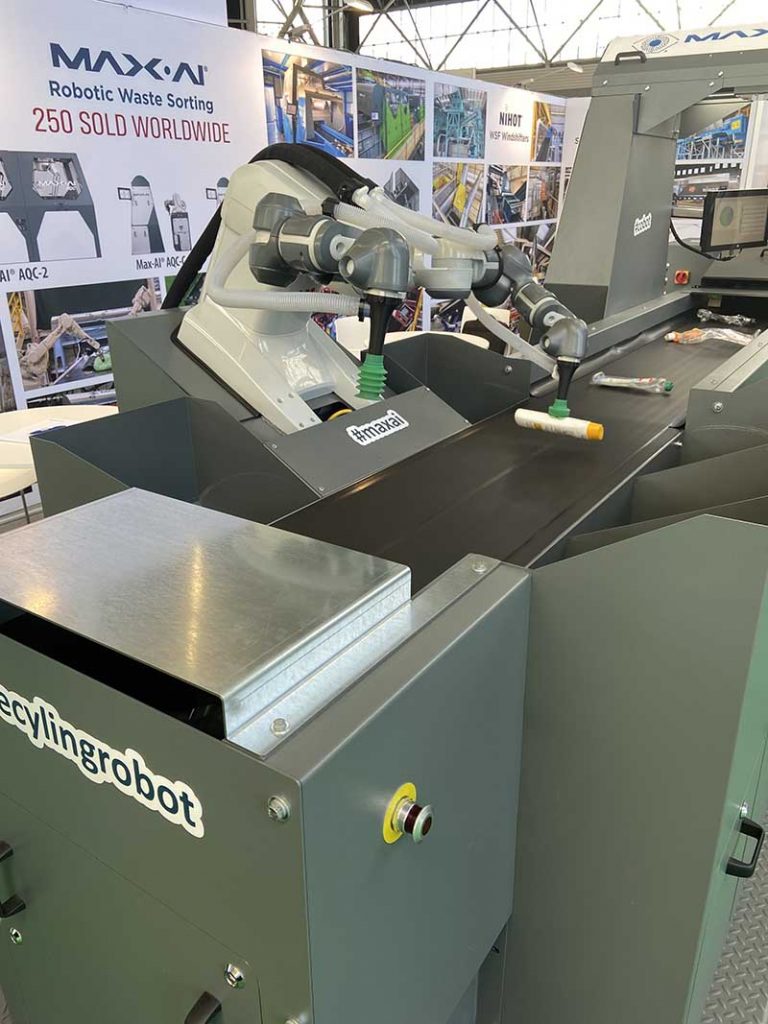Max-AI® technology is an artificial intelligence that identifies recyclables and other items for recovery. Through deep learning technology, Max employs both multi-layered neural networks and a vision system to see and identify objects similarly to the way a person does. The technology is driving improvements in Material Recovery Facility (MRF) and Plastic Recovery Facility (PRF) design, operational efficiency, recovery, system optimization, maintenance, and more.
Interview with Remi Le Grand, Director of Sales & Marketing at Max-AI®.
Easy Engineering: What are the main areas of activity of the company?
Remi Le Grand: We are targeting mainly the waste sorting and recycling companies that are looking to further increase the automation of their sorting/recycling process but are currently relying for a big part on the human factor. The labour shortage is really the main driver for a lot of them to look into robotics.
We are talking about further industrialization of the recycling process.
On the other hand, our AI vision system is now also well prepared to create composition analysis of any waste stream in real-time.
E.E: What’s the news about new products?
R.L.G: We have re-launched the AQC-C (Co-bot robot) and have successfully been implementing them in the US, The Netherlands and also Italy whereby it is operating at locations where it either replaced a human quality controller or is assisting them on the same belt. Besides that, we also installed now our very first AQC-Flex robot for pulling green compost bags from black and blue bags:

E.E: What are the ranges of products?
R.L.G: The ranges are:
- AQC-1 (suction)
- Max-AI AQC-2 (suction)
- Max-AI DUAL AQC-2 (suction)
- Max-AI AQC-C (suction)
- Max-AI AQC-Flex (pneumatic gripper)
- Max-AI High Speed VIS (Visual Identification System) module together with NRT optical sorting
- Max-AI VIS for data analysis and composition of waste streams.
E.E: At what stage is the market where you are currently active?
R.L.G: The waste recycling industry is already existing for many decades and has over time experienced a continuous boost by technology, and that that have made the operations easier, controlled, continuous and improved. The waste sorting robot is one of the last pieces of the puzzle at these facilities. Also, the data acquisitions that is now possible with our Max-AI VIS modules now allow operators to understand their waste streams immediately and make impactful decisions accordingly.
E.E: What can you tell us about market trends?
R.L.G: Increase purity at a higher recovery rate is todays demand. It is only being achieved by adding more technology that is capable to work longer and better and with a higher production uptime. Transparency will bring more understanding in the todays circular economy approach and will be achieved through visibility. This visibility is a major driver for the usage of vision technology, coupled with AI capability.

E.E: What are the most innovative products marketed?
R.L.G: The AQC series are the most popular. We have now over 250 units in operation.
The AQC series allows users to create better purity products, achieve higher outputs and a more continuous production flow than ever before. The return on investment makes absolutely sense in any discussion around human labour shortages in this industry. Not to mention that managing a human workforce is also quite challenging.
E.E: What estimations do you have for 2023?
R.L.G: A strong and continued coming re-bounce coming from an excellent 2022 of the economies is expected by Q1 of 2023 whereby the companies are gently forced to industrialize because people will have a better choice…either to work in a clean, non-hazardous environment or in dusty, smelly, hazardous, dirty environment. We have just started to scratch the surface in 2017 but will hit the 50 installs in Europe by the end of 2023.

